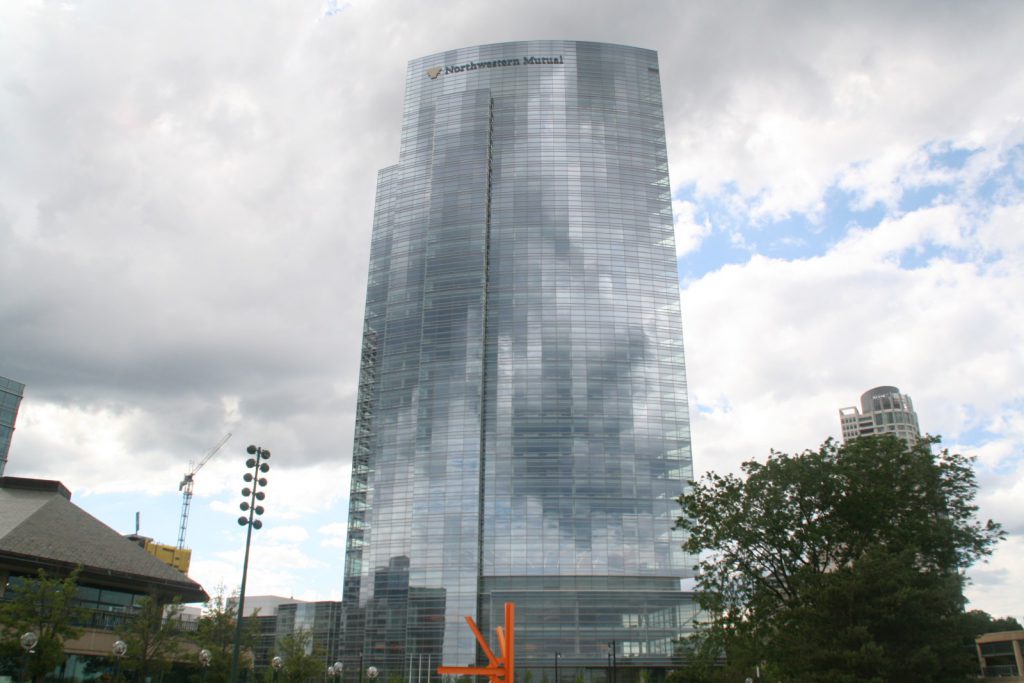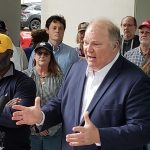Can Downtown Boom Boost Poorer Areas?
Airbnb tax, mentorship program, other proposals suggested to boost investment elsewhere.
By virtually every metric, Downtown, stretching from the Milwaukee River to E. Ogden St., Interstate 43 to Lake Michigan, is booming. But the rest of the city, by and large, has struggled to see that same growth.
“Since 2005, the tax base of downtown Milwaukee has doubled, it has increased 99.5 percent, while the rest of the city has grown by only 5.7 percent,” said Department of City Development (DCD) deputy commissioner Martha Brown during a presentation on equity strategies to the Common Council.
“What does that tell you?” asked Alderman Russell W. Stamper, II.
“It tells you that you’ve had a lot more investment downtown than you’ve had [in the central city],” said Brown.
“That’s the first point, that’s the obvious point, what else does it tell you,” Stamper asked.
“That’s what it tells me,” responded Brown.
The amount of attention and funding available for projects beyond Downtown and the nearby neighborhoods has been a frequently referenced issue between members of the Common Council and DCD. The discussion works its way into virtually every city-subsidized project, including the proposed extension of The Hop, the development of Fiserv Forum and the Ikon Hotel deal.
The Common Council tasked Brown and DCD Commissioner Rocky Marcoux with compiling strategies to equitably distribute resources from Downtown to economically-challenged neighborhoods.
Brown said at a high level some of that is already happening. According to DCD analysis, if Downtown’s assessed value had grown only at 5.7 percent the average Milwaukee homeowner would have to pay $300 more annually to maintain the city’s services. “The point being that Downtown growth has generated taxes that are supporting activity all over the city,” said Brown.
Brown and Marcoux presented four high-level strategies in late November: raising money for investment in neighborhood development activity, establishing mentor/protege relationships, improving access to downtown job opportunities for neighborhood residents and encouraging downtown workers to invest in near-downtown neighborhoods.
“This is a group of ideas,” said Brown. “We haven’t been pursuing these ideas. We are waiting to find out how you felt about them.”
The ideas are far-ranging. To raise money for a neighborhood development fund, the department identified potential state law changes to enable a short-term occupancy tax on Airbnb rentals or a ticket surcharge. Marcoux suggested a change to state tax incremental financing law could allow the city to create parallel districts with overperforming downtown districts like one created for Northwestern Mutual‘s new tower to fund central city projects like the Ikon Hotel. Limits on TIF spending, currently set at a half-mile from a district’s boundaries, could allow districts to be leveraged to pay for more street repair and other public infrastructure projects.
Marcoux conceded that many of the ideas don’t originate with DCD after Alderwoman Milele A. Coggs noted they are variations on some that have already been discussed. “Many of you have talked about some of these issues, we’re just trying to put it in a list,” said Marcoux.
DCD’s two-page report suggests a private investment fund could be created, with a potential investment from the city’s pension fund, and a portion of the profits allocated to a neighborhood investment fund.
Some changes wouldn’t require a state law change or millions of dollars. Deliberate partnerships could be created between experienced developers and businesses with smaller neighborhoods. This would be designed as a complement to the Associates in Commercial Real Estate (ACRE) program run by LISC Milwaukee that works to train women and minorities for careers in real estate.
Coggs emphasized that efforts to grow neighborhoods should aim to prevent displacement. “As much as we want to see development, as much as we want to see investment, we want to see that for the pillars of the community that are already there,” she said. Marcoux and Brown suggested a similar partnership to train property-management firms outside of Downtown.
The alderwoman asked what could be done with permitting fees to generate revenue. “We need to do analysis on that, but it’s worth taking a look at,” said Marcoux. The commissioner suggested doing so might drive investment elsewhere, and that he believes the city has an asset today with low fees and a straight-forward approach to project approvals. “A lot of the folks in the development community feel that the rents are too low to support some of the new construction,” said Marcoux of the potential to raise additional revenue from fees. He said an example of that is the difficulty in securing financing for The Couture.
Brown said the program would work through partnerships with employers. “They’re going to want to work with the city do that?” said Ald. Jose G. Perez. “I don’t know. Just putting that out there,” responded Brown.
The deputy commissioner suggested expanding the streetcar and making other transportation investments to link outlying neighborhoods with Downtown would increase opporunities.
The final suggestion is to establish a “live in the city” campaign targeted at encouraging individuals that live and work Downtown to stay in the city if they consider moving to a bigger home. “We know that a lot of the housing units that have been developed Downtown are smaller units, not necessarily for families,” said Brown. The program, which Brown said previously existed 35 years ago, would provide guidance on city amenities and encourage people to consider a single-family home or duplex in the city. The program could include low-interest loans and information on city-owned properties. “I think we could put together a compelling package,” said Marcoux.
What happens next? That’s up to the Common Council.
Legislation Link - Urban Milwaukee members see direct links to legislation mentioned in this article. Join today
If you think stories like this are important, become a member of Urban Milwaukee and help support real, independent journalism. Plus you get some cool added benefits.
Eyes on Milwaukee
-
Church, Cupid Partner On Affordable Housing
 Dec 4th, 2023 by Jeramey Jannene
Dec 4th, 2023 by Jeramey Jannene
-
Downtown Building Sells For Nearly Twice Its Assessed Value
 Nov 12th, 2023 by Jeramey Jannene
Nov 12th, 2023 by Jeramey Jannene
-
Immigration Office Moving To 310W Building
 Oct 25th, 2023 by Jeramey Jannene
Oct 25th, 2023 by Jeramey Jannene






















